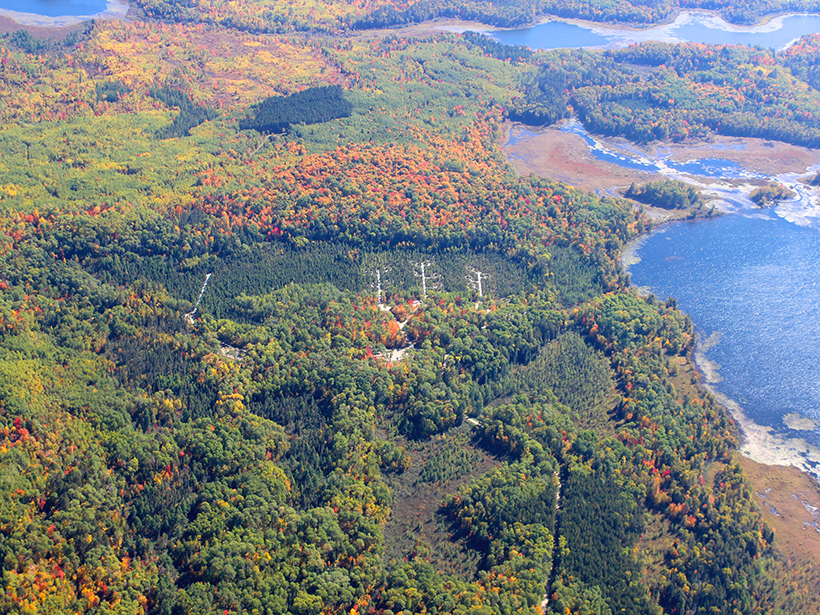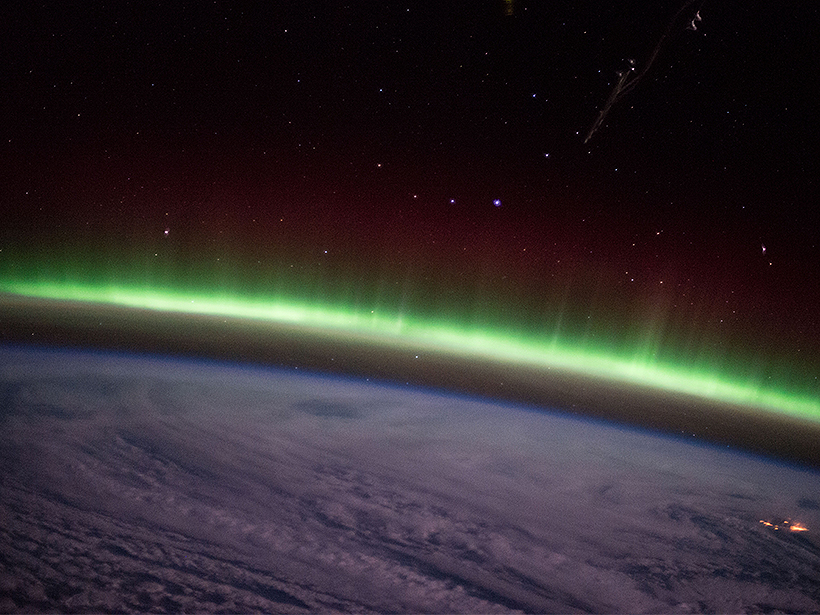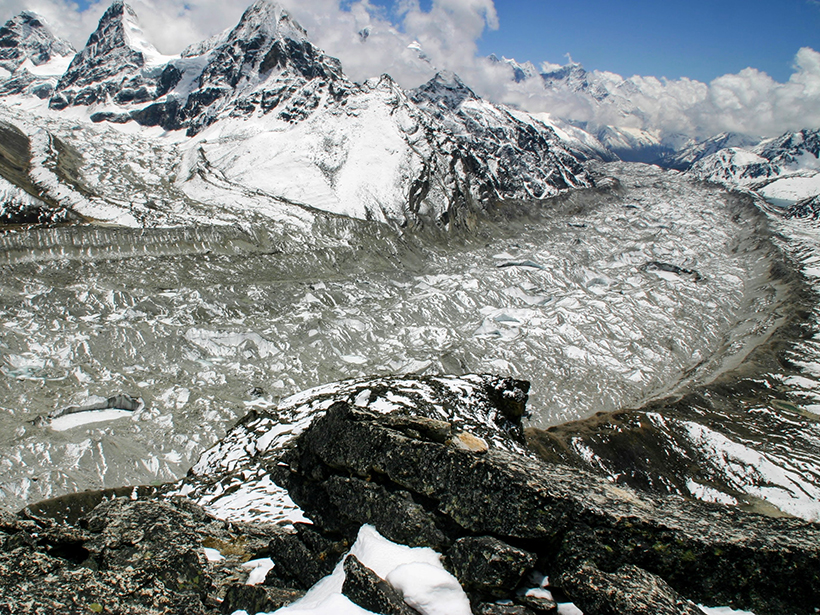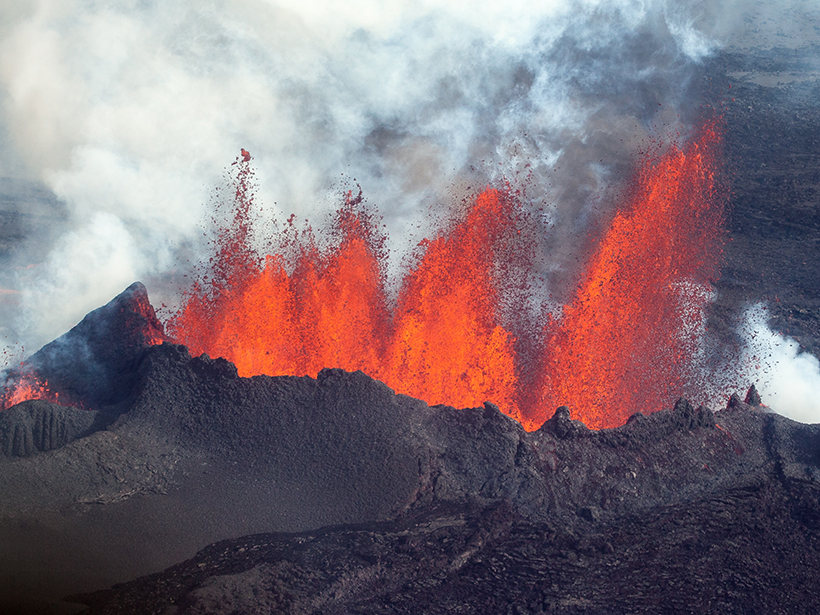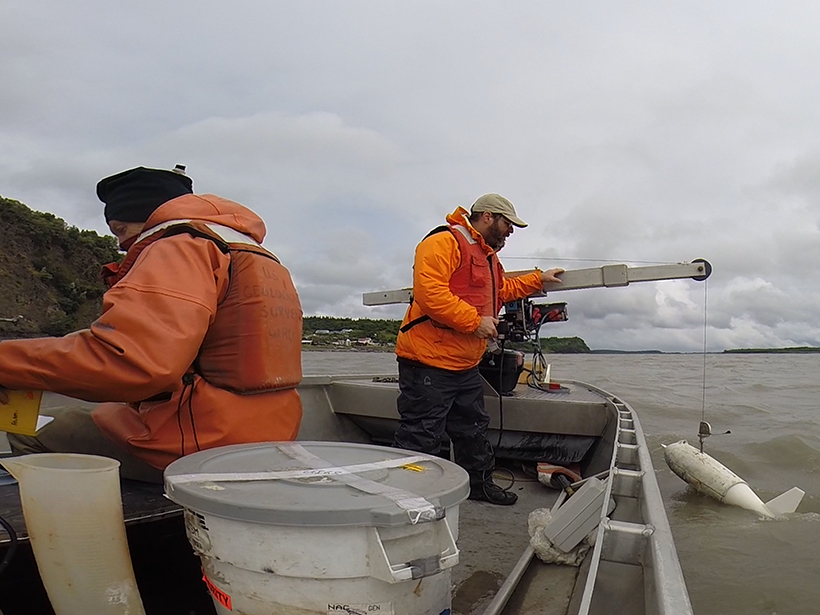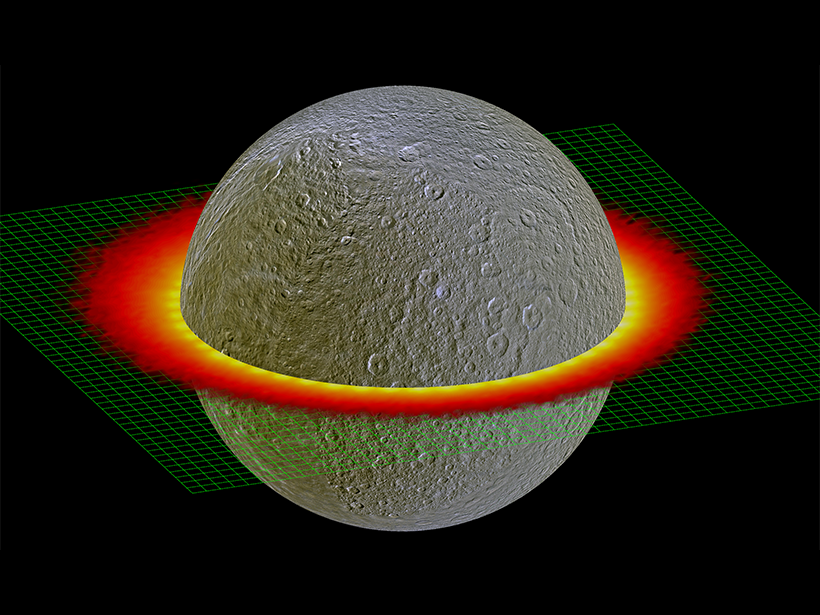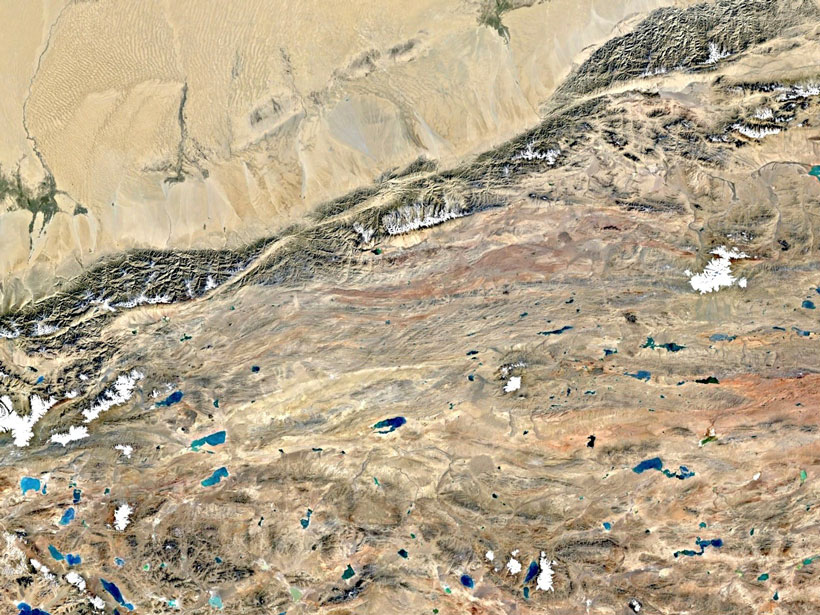Peatlands store around a third of Earth’s soil carbon, and a new study begins to reveal how the ecosystems’ organic matter changes with depth.
Research Spotlights
Research spotlights are plain-language summaries of recent articles published in AGU’s suite of 24 journals.
Mysterious Aurora Borealis Feature Explained for the First Time
High-speed particles cause indentations in the magnetopause to form “throat auroras.”
A Novel Way to Map Debris Thickness on Himalayan Glaciers
By combining changes in elevation with other data, scientists have developed a method for estimating the thickness of debris covering glaciers on whose water more than 800 million people depend.
Magma Flow in a Major Icelandic Eruption
Mechanical modeling suggests that previous, undetected eruptions released tectonic stress near the ice-covered Bárðarbunga volcano.
Challenging the Day Diagram, a Rock Magnetism Paradigm
A critique of the plot routinely used to determine bulk magnetic properties concludes the technique is so ambiguous that new approaches to understanding magnetic mineral assemblages must be developed.
What Shaped the Northern Apennine Deformation Front?
An integrated interpretation of well and seismic reflection data from Italy’s Po Valley shows the range’s undulations are controlled by the slope and composition of two major gliding horizons.
Using Microbes to Predict the Flow of Arctic Rivers
Bacterial DNA provides a good estimate of river discharge.
A Consistent Model of Ice Dissociation on Celestial Bodies
A model based on decades of experimental results can now quantify the products of water ice dissociation caused by radiation and predict the products expelled into an icy body’s outer atmosphere.
A Near-Real-Time Tool to Characterize Global Landslide Hazards
By fusing susceptibility information with precipitation data, a new model generates “nowcasts” to predict the potential for rainfall-triggered landslides in steep terrain between 50°N and 50°S.
New Insights into Continental Deformation in Northwestern Tibet
A new surface velocity map shows strain localized along major strike-slip features, suggesting the central Tibetan Plateau is not deforming as a fluid in response to gravitational collapse.

